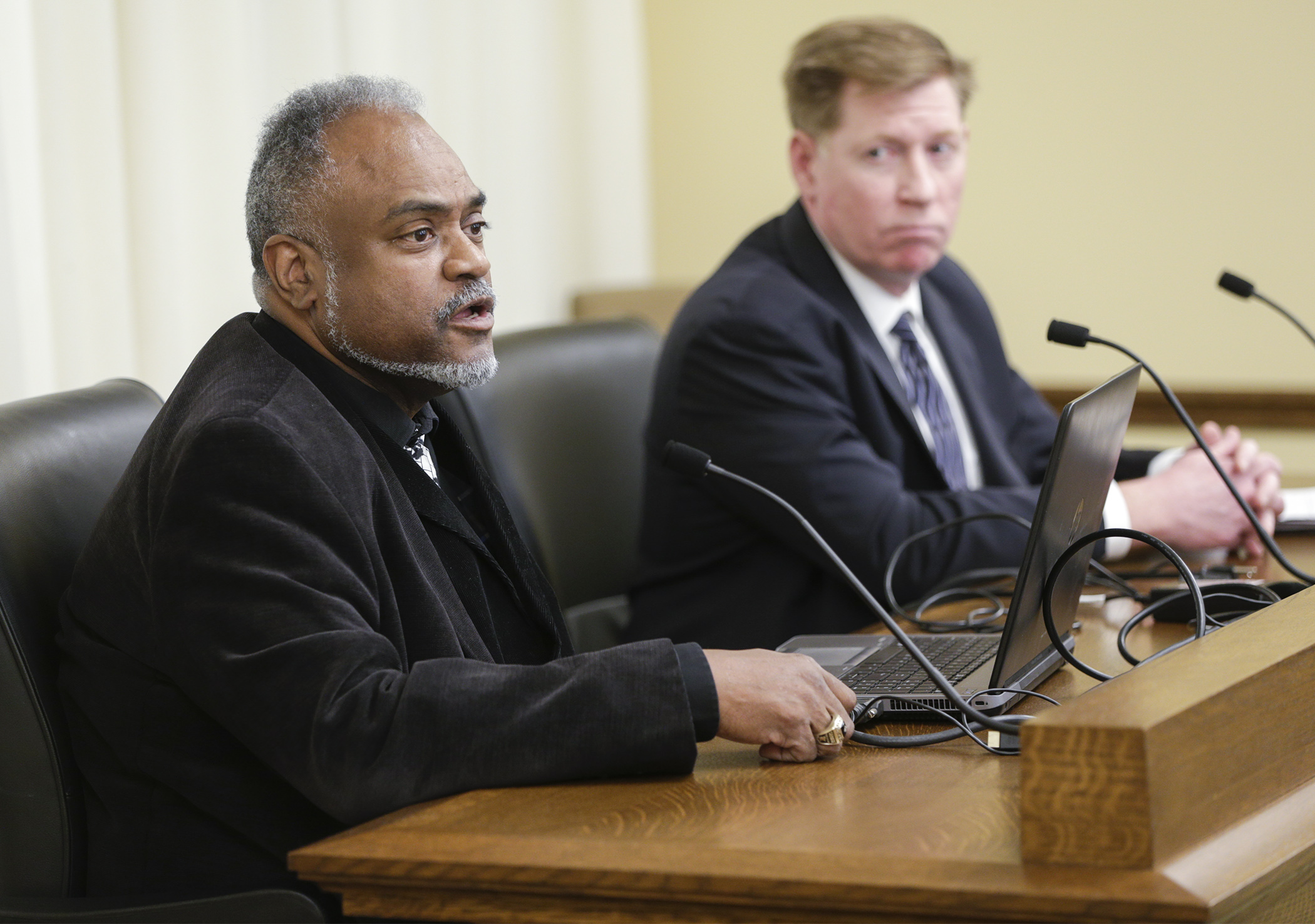Report: Action needed to reduce ‘deadly force encounters’ with police

A preview of the report on deadly police shootings arrived at the Capitol Wednesday.
Depending on who you talk to, the report either makes valuable recommendations to reduce these tragic encounters, or it will do nothing to change the systemic problems in policing and police culture that make these deadly encounters too frequent.
The executive summary of the State of Minnesota Working Group on Police-Involved Deadly Force Encounters outlines 28 recommendations and 33 action steps aimed at reducing deadly force encounters with law enforcement in Minnesota. The final report, a joint effort from the Department of Public Safety and the Office of the Attorney General, is due in April.
Public Safety Commissioner John Harrington told the House Public Safety and Criminal Justice Reform Finance and Policy Division the preliminary report is very inclusive, and was produced after holding four public hearings and three listening sessions statewide, where more than 50 panelists and community members offered in-person testimony, including family members of people killed in encounters with police.
“We made sure that community voices were heard,” he said.
Saying the report “is not an end in itself” and should not sit on a shelf, Harrington tasked legislators to seriously study its recommendations and action steps and enact legislation based on them.
What’s in the report?
The executive summary has five broad categories of ways to reduce deadly force encounters with police:
- community healing and engagement;
- prevention and training;
- investigations and accountability;
- policy and legal implications; and
- officer wellness.
While discussing the issues of prevention and training, Harrington said he and other members of the working group had a real “aha” moment when learning that about half of police deadly-force encounters involve a person experiencing a mental health crisis.
The summary recommends law enforcement agencies partner with social workers and crisis-response teams and co-respond whenever possible to individuals having a mental-health crises. Officers should also be “trained in de-escalation tactics and skills … in order to reduce use-of-force, especially when responding to persons in crisis.”
Use-of-force tactics are an area of great concern for community members who provided public testimony to the working group, according to Harrington.
The group’s recommendations in that area include requiring law enforcement officers to:
- de-escalate when such an effort does not compromise officer safety;
- intervene, when appropriate and safe, when witnessing unreasonable use-of-force; and
- report all incidents of unreasonable use-of-force to a supervisor.
Harrington said full accountability and transparency in the aftermath of an officer-involved shooting is crucial to maintain public trust.
The working group recommends creating an independent and specialized investigation unit within the Bureau of Criminal Apprehension “with the authority to investigate all officer-involved shootings and uses of force that result in death or severe bodily injury.”
Report ‘flawed’ and excluded key voices
Several testifiers, including family members of those killed in police encounters, said they did not think the report would lead to any meaningful changes in police actions or accountability.
Michelle Gross, president of Communities United Against Police Brutality, said she was “deeply concerned and deeply disappointed” in the report, and noted that the majority of the 18-member working group were from law enforcement.
“From this flawed process, came flawed recommendations,” she said.
She said the concept that an independent unit within the BCA could objectively investigate police shootings was extremely problematic, and that community oversight of these shootings is long overdue.
“The community is fed up with one law enforcement agency investigating another,” she said.
Monique Cullers-Doty, whose nephew Marcus Golden was killed in a 2015 police encounter, echoed those sentiments, saying the “thin blue line” of officers protecting each other will never change until those committing unjustified killings are held accountable.
She said eliminating the three-year statute of limitations on prosecutions of officers involved in deadly shootings is one important step to bring justice to victims, as it would allow families more time to complete investigations into the deaths of their loved ones.
Cullers-Doty said making that legal change has a strong precedent because statutes of limitations have recently been eliminated for victims of abuse by Catholic clergy and for victims of sexual assault.
Related Articles
Search Session Daily
Advanced Search OptionsPriority Dailies
Ways and Means Committee OKs proposed $512 million supplemental budget on party-line vote
By Mike Cook Meeting more needs or fiscal irresponsibility is one way to sum up the differences among the two parties on a supplemental spending package a year after a $72 billion state budg...
Meeting more needs or fiscal irresponsibility is one way to sum up the differences among the two parties on a supplemental spending package a year after a $72 billion state budg...
Minnesota’s projected budget surplus balloons to $3.7 billion, but fiscal pressure still looms
By Rob Hubbard Just as Minnesota has experienced a warmer winter than usual, so has the state’s budget outlook warmed over the past few months.
On Thursday, Minnesota Management and Budget...
Just as Minnesota has experienced a warmer winter than usual, so has the state’s budget outlook warmed over the past few months.
On Thursday, Minnesota Management and Budget...